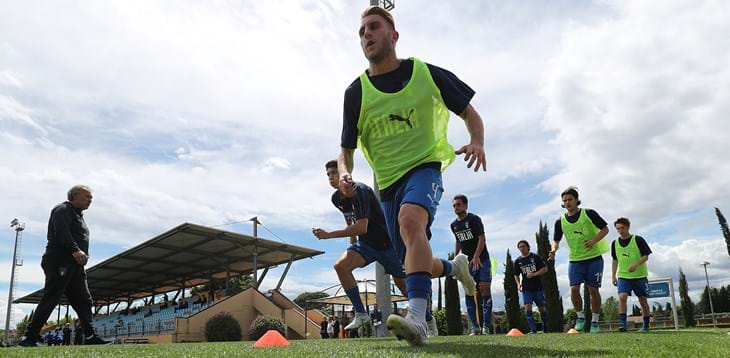
Test submassimali nella valutazione dell’endurance nel calcio: una nuova ricerca
Lo studio, condotto dal Laboratorio di Metodologia dell’allenamento, è stato accettato per la pubblicazione sulla prestigiosa rivista ‘Scandinavian Journal of Medicine and Science in Sports’giovedì 21 novembre 2019

L’utilizzo di test submassimali è raccomandato nei casi sia necessaria una frequente verifica della condizione fisica dei calciatori, in particolar modo nel corso della stagione competitiva. Tutto questo è particolarmente importante quando si parla di ‘endurance’, ovvero dell’abilità del calciatore di produrre lavoro nel corso del tempo.
Lo studio della validità di popolari test (Yo-Yo test intermittenti) - per la verifica della condizione aerobica del calciatore nella loro versione sub-massimale - è stato l’obiettivo di uno studio condotto dal ‘Laboratorio di Metodologia dell’allenamento e Biomeccanica applicata al Calcio’ del Settore Tecnico della FIGC, che in questi giorni è stato accettato per la pubblicazione sulla prestigiosissima rivista scientifica ‘Scandinavian Journal of Medicine and Science in Sports’.
I risultati di questo studio, condotto in collaborazione con la Southern Denmark University (Odense, Danimarca) e il Research Center in Sports Sciences del University Institute of Maia (Maia, Portogallo), hanno evidenziato la validità delle opzioni analizzate fornendo informazioni utili a tutti coloro che, a diverso livello, ritengono utile l’impiego di queste procedure per il controllo e la regolazione dell’allenamento.
Titolo della ricerca: Submaximal field testing validity for aerobic fitness assessment in recreational football
Autori: Susana Cristina Araújo Póvoas, Peter Krustrup e Carlo Castagna
Submaximal field tests are especially recommended when repeated testing is warranted. This study aimed at assessing the validity of the submaximal versions of the Yo-Yo intermittent tests in male recreational football players in untrained and trained status. The participants’ (n=66; age 39.3±5.8 years, VO2max 41.2±6.2 ml·kg-1·min-1, body mass 81.9±10.8 kg, height 173.2±6.4 cm) heart rate after 2 min (HR2min) during the level 1 (YYIE1HR2min) and 2 (YYIE2HR2min) versions of the Yo-Yo intermittent endurance test and the level 1 version of the Yo-Yo intermittent recovery test (YYIRHR2min) was plotted against individual VO2max values. Thirty-two participants performed all the tests after a 12-week recreational football intervention for test responsiveness. Associations between VO2max and YYIE1HR2min were large to small (P=0.0001). Large to trivial associations were found between YYIE2HR2min, YYIR1HR2min and VO2max (P<0.01). Maximal Yo-Yo performances were large, significant and inversely related to HR2min (-0.68 to -0.49, P<0.0001). Pre-to-post-intervention ICC values were good for YYIE1HR2min and YYIE2HR2min, and excellent for YYIR1HR2min. Post-intervention associations between HR2min and Yo-Yo maximal performances were large to very large (-0.55 to -0.72; P<0.002, n=32). Training-induced changes in VO2max moderately correlated with YYR1HR2min (-0.48; P=0.007; n=32). HR2min lower than 89%, 98% and 91%HRmax for YYIE1HR2min, YYIE2HR2min and YYIR1HR2min, respectively, may be considered as signs of good to excellent VO2max levels. Since in the YYIE1HR2min, the participants attained 84%HRmax and test specificity increased for HR2min values <89%, this test may be the preferred choice when repeated assessment of aerobic fitness, using submaximal intermittent Yo-Yo tests, is considered in recreational football.



